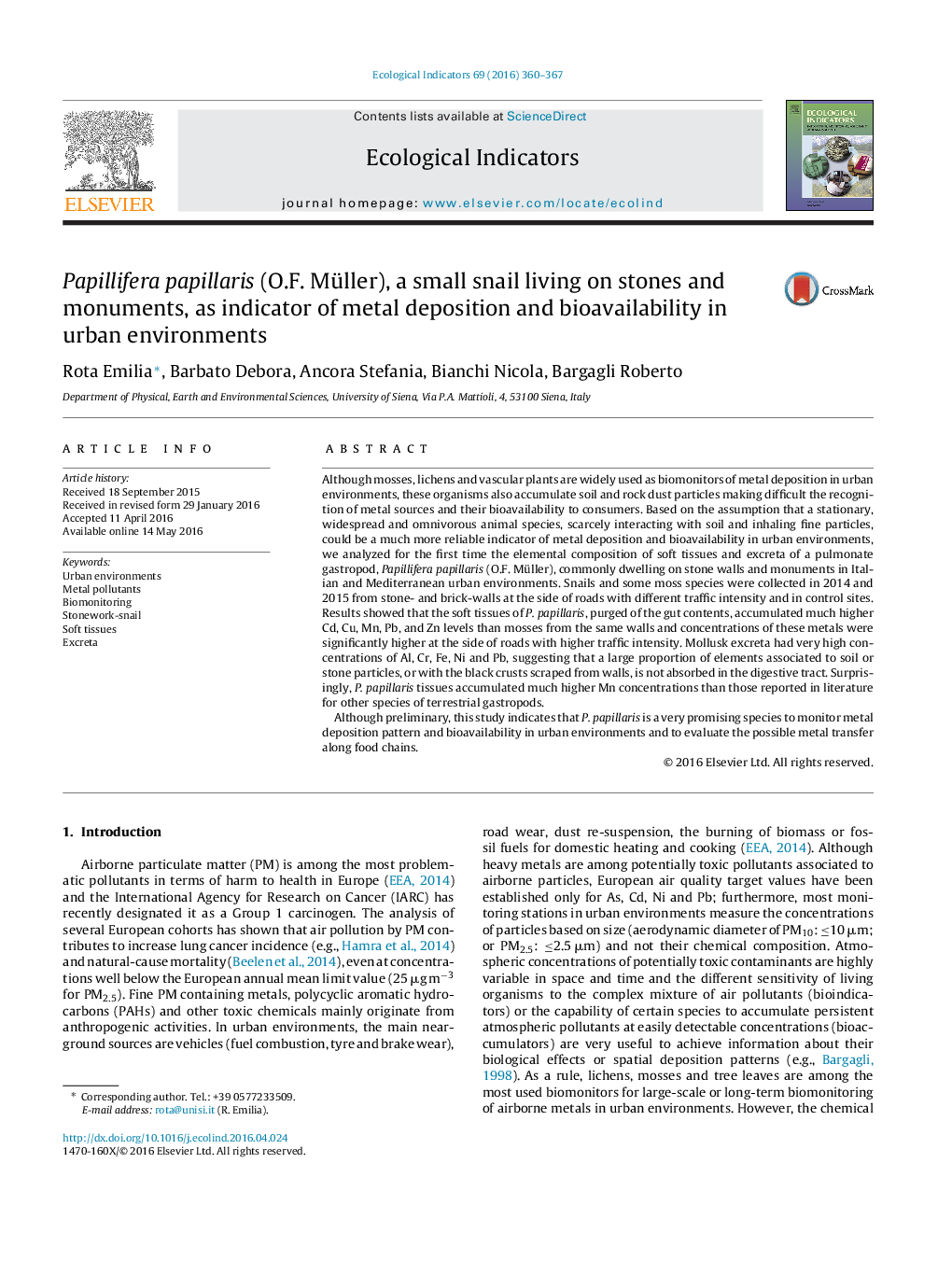| کد مقاله | کد نشریه | سال انتشار | مقاله انگلیسی | نسخه تمام متن |
|---|---|---|---|---|
| 6293244 | 1617133 | 2016 | 8 صفحه PDF | دانلود رایگان |

- Metal levels in tissues of the stonework snail P. papillaris reflect traffic load.
- Al, Cr, Fe, Ni and Pb scraped from wall surfaces are mostly excreted with feces.
- Snail tissues are better indicator of metal pollution and bioavailability than moss.
- Pb levels in excreta highlight the scarce Pb absorption in land snail tissues.
- P. papillaris tissues accumulate higher levels of Mn than other snail species.
Although mosses, lichens and vascular plants are widely used as biomonitors of metal deposition in urban environments, these organisms also accumulate soil and rock dust particles making difficult the recognition of metal sources and their bioavailability to consumers. Based on the assumption that a stationary, widespread and omnivorous animal species, scarcely interacting with soil and inhaling fine particles, could be a much more reliable indicator of metal deposition and bioavailability in urban environments, we analyzed for the first time the elemental composition of soft tissues and excreta of a pulmonate gastropod, Papillifera papillaris (O.F. Müller), commonly dwelling on stone walls and monuments in Italian and Mediterranean urban environments. Snails and some moss species were collected in 2014 and 2015 from stone- and brick-walls at the side of roads with different traffic intensity and in control sites. Results showed that the soft tissues of P. papillaris, purged of the gut contents, accumulated much higher Cd, Cu, Mn, Pb, and Zn levels than mosses from the same walls and concentrations of these metals were significantly higher at the side of roads with higher traffic intensity. Mollusk excreta had very high concentrations of Al, Cr, Fe, Ni and Pb, suggesting that a large proportion of elements associated to soil or stone particles, or with the black crusts scraped from walls, is not absorbed in the digestive tract. Surprisingly, P. papillaris tissues accumulated much higher Mn concentrations than those reported in literature for other species of terrestrial gastropods.Although preliminary, this study indicates that P. papillaris is a very promising species to monitor metal deposition pattern and bioavailability in urban environments and to evaluate the possible metal transfer along food chains.
Journal: Ecological Indicators - Volume 69, October 2016, Pages 360-367